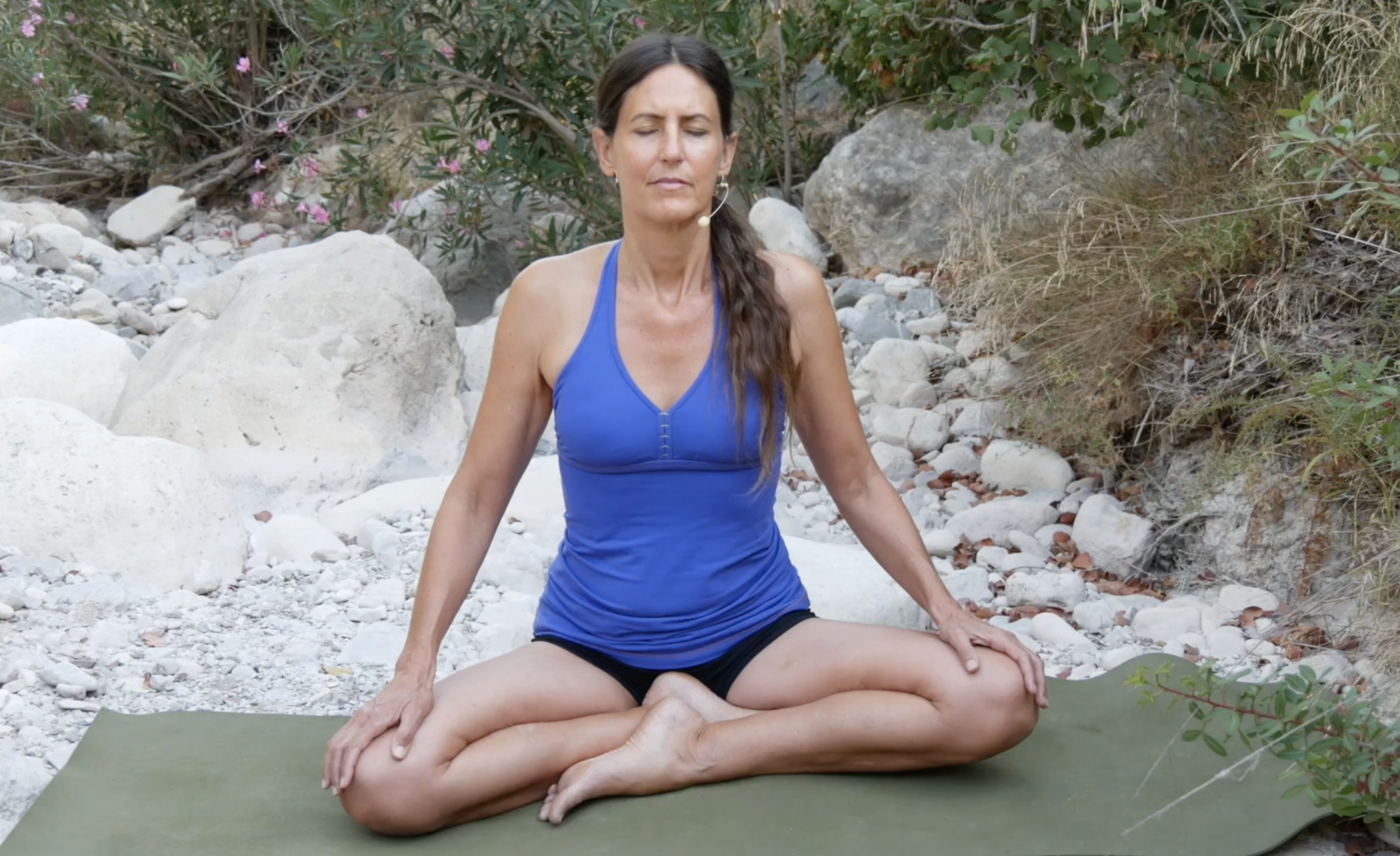In this article, we’ll learn how to breathe effectively with the diaphragm. The breathing will learn is called three-part breathing. Once we learn this, we’ll add a pause at the top and at the bottom of the breath. This is called Kumbaca for those of you who have done some yoga, From the last article, we learned that the diaphragm is a dome shaped muscle that supports our breathing.
If you have a diaphragm problem and you’re not breathing correctly, it’s likely you also have a pelvic floor problem. A very simple test to do is to just close your eyes and notice where you’re breathing. Simply breathing right now. Where does your breath go? A lot of the times, our breath is high up in the chest. So take a comfortable seat on the floor, like me, or in a chair. Adjust your seat for optimal alignment. Your pelvis tips forward slightly to support the natural curve of your spine. Watch my align your spine video for detailed instructions.

Relax your body. Feel your pelvis heavy on the earth. Take one hand to your belly, and as you inhale, feel your belly expand into your hand. Exhale, belly falls. Some people reverse this. Inhale belly expands. Exhale, belly falls. Now bring your hands to your ribcage. Thumbs at the back, fingers at the front. Inhale and expand your breath into your hands to widen your ribs. Exhale all the way out. Feel the ribs knit back together. Let’s try one more time. Inhale. Feel your ribs expand. Exhale, so you can even feel in the back where your thumbs are. One more time. Exhale. Now, take one hand to the top of your chest. Just feel where your collar bones are, and as you’re breathing, breathe into the upper chest, lifting your chest, and expanding our widening your collarbones, and then exhale out.
So, these are the three areas we’ll be breathing into for this three part breathing exercise. Imagine that your torso is like this cylinder shape container, and we’re breathing into fill this container up and those three parts, makeup, three parts of the container, the bottom, the middle, and the top. As you inhale, expand your ribcage. Inhale, expand your ribs. Inhale top of the chest, and now exhale from the top of the chest, all the way back down to the bottom of the belly, and you’ll feel everything moving back in. Inhale belly, ribs, upper chest. Relax your shoulders. Exhale, stay tall and exhale all the way to the bottom of your belly. And one more time. Inhale. Exhale.

This time we’ll pause at the turn of the breath. Inhale to the top. Pause, two heartbeats. Exhale to the bottom of your breath. Pause again. Two heartbeats. Inhale, expand belly, ribs, upper chest pause. . Exhale from the top of the chest all the way down to the bottom of your belly, all the breath out, and pause. Inhale, pause, exhale. Try a few more rounds on your. Relax your focus. Notice the capacity we have to breathe fully. People have a tendency to breathe very shallow with a shallow breath. You’re not getting this horizontal rib expansion, and you’re missing out on this vertical relationship between the diaphragm and the pelvic floor. This vertical relationships gives you the necessary elasticity in the pelvic floor. Your pelvic floor is meant to contract and relax with each exhale and. This is the relationship that supports you when you’re doing other things, other exercises like jumping. For instance, in the next article, we’ll learn how to feel the pelvic floor with the breath.
















